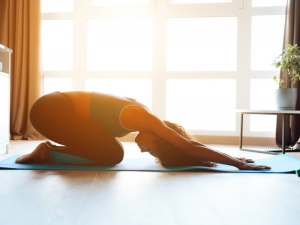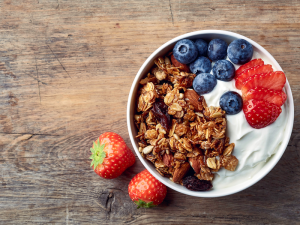November is National Aviation History Month. From the first glider flight over 100 years ago by the Wright Brothers to the largest aviation wonders of present, advancements in aviation engineering and technology have soared to new heights—literally. Airplanes are likely the first things that come to mind when we hear the word “aviation.” But where do helicopters and other vertical takeoff and landing (VTOL) aircraft fit in to the mix?
This month, Vaughn College turns its sights to the history of personal VTOL aircrafts and chronicles the advancements, benefits, and future of this amazing technology. Did someone say “flying cars?”
For nearly 90 years, Vaughn has been steeped in aviation history. From opening its doors in 1932 as the Casey Jones School of Aeronautics to its present day ranking as one of the nation’s Best Colleges in the Regional North by U.S. News and World Report, Vaughn has remained true to its vision of educating and training its graduates for futureproof careers.
What are VTOL vehicles?
Vertical takeoff and landing aircrafts are vehicles that have the unique ability to depart, hover and land vertically. In addition to their unique take off and landing abilities, they can fly slowly and land in small spaces, unlike conventional aircraft. Today, there are two types of VTOL technology: rotary wing aircraft and powered lift. Here is how they compare:
- Rotary wing aircraft or rotorcraft—These vehicles use lift to become airborne. Lift is generated from spinning rotor blades revolving around a central mast. The helicopter is a popular example of a rotary wing aircraft.
- Powered-lift aircraft—These aircraft have a fixed wing design. Although they take off and land vertically, they perform differently than rotary wing aircraft when in flight. Some rely on the rotor for lift, and then switch to a fixed-wing lift while in flight, while others involve tilting the aircraft forward to achieve horizontal flight. Today, some powered-lift aircrafts are considered vertical and/short takeoff and landing (V/STOL) vehicles that can switch to conventional takeoff and landing (CTL).
The history of VTOL technology
Most would never connect the dots between Leonardo Da Vinci and helicopters. But did you know the famous Renaissance painter sketched an image resembling a helicopter that he named the “aerial screw.” It is believed he made small models of the design but never pursued vertical flight any further. One Italian who did make his mark in vertical flight was Enrico Forlanini. In 1877, Forlanini became the first to build an unmanned steam-powered helicopter that remained in the air for about 20 seconds. This first flight laid the foundation of rotary aircraft for years to come. Test your knowledge on more historic first flights in our blog: “Greatest First Flights in Aviation History in Honor of Aviation History Month.”
Advancements in engineering and technology
From the 1920s through the 1940s, inventors across the globe attempted to design and fly their experimental helicopters. Unfortunately, some met with disastrous results. It wasn’t until the 1950s when the widespread use of turbine engines helped lead the way to building the helicopters and modern VTOL aircraft we know today.
Flying cars
The “flying car” concept was first introduced after World War II. Even Henry Ford predicted it would be a reality in the near future. Ford, along with several automobile manufacturers and the US Army, delivered prototypes of “flying jeeps” The Ford Motor Company created a personal aircraft named the Volante Tri-Athodyne—a 3/8-to-scale concept car model that used three ducted fans to enable VTOL. Unfortunately, Ford abandoned the project. In 1956, the US Army initiated the largest innovation when it began investigating “flying jeeps” as an alternative to helicopters on account of their smaller size and ease of flying. Although the research was dismissed, the concept still lives on today. Read more about the future of flying cars in our blog: “Urban Air Mobility: Transforming Sky Transportation.”
Benefits of VTOL technology
Today’s engineers are designing electric vertical takeoff and landing (eVTOL) aircraft that use electric motors or batteries instead of fuel. This advancement is proving beneficial on several economic and environmental fronts. Here are some benefits of VTOL technology we are seeing today:
- Lower overall vehicle costs due to a reduction in maintenance and fuel costs
- Noise pollution and gas emissions reduction with more energy efficient vehicles
- Combat or rescue situation usage stemming from more landing flexibility in small areas
- Speed and accuracy due to wing optimization, since they do not control takeoff and landing
- Faster aircraft due to less drag
The fast and futuristic
Aircraft racing is putting eVTOL on the fast track. Alauda Racing, an Australian aviation firm, is introducing the Airspeeder, the new electric VTOL that was modeled after the 1960s British Formula One race car. With original plans to race this year, Air Race E is organizing a World Cup of electric conventional takeoff and landing (eCTOL) aircraft. Pilots will experience onboard cameras and racing speeds up to 125 mph.
Closer to home at Vaughn
Vaughn’s Unmanned Aerial Vehicle Team has bragging rights of its own. For the past two years, the team placed first and second place, respectively, at the 2018 and 2019 Micro Air Vehicle Student Challenge Competition. They developed two drones to compete in both the manual and autonomous categories. Both drones were designed to perform VTOL with onboard flight-stabilization and camera. Way to go, team!
Are you ready to pursue a futureproof career? Discover all that’s possible with a degree in engineering and technology, management, or aviation. Apply today.
With the fall semester in full swing, today’s college students are settling into their academic grooves as many continue to learn virtually in response to the coronavirus pandemic. Maintaining a healthy lifestyle through it all is an important part of keeping the body and mind in balance to ensure a successful and productive learning experience.
Did you know that your eating, drinking and sleeping habits have a big impact on how you feel throughout the day? If you’re thinking you could use a boost, you’re not alone. You may just need to tweak a few things in your schedule.
As part of Vaughn College’s ongoing commitment to our students’ success and well-being, we have outlined some beneficial lifestyle tips to help you wake up feeling great, boost your energy and bring you an overall sense of well-being. Think of it as a wellness check up—with no doctor visit required!
Wake up feeling great

Let’s face it. Unless you’re a morning person, waking up early is not fun. If you’re someone who has hit the snooze button one too many times, you know all too well how sleeping-in can throw off your day, causing you to then rush and stress out. Here are some habits to try that may help you wake up feeling great and ready to conquer your day:
- Stretching—You don’t have to know yoga to reap the benefits of stretching. Setting aside about 15 minutes in the morning can provide positive energy and leave you feeling like a new person.
- Relaxing “me” time—Enjoying a relaxing morning where you’re doing something that makes you happy is critical to setting a positive tone for the day.
(Just be sure to give yourself enough time. This may mean going to bed, and waking up earlier.)
- Getting enough sleep—This can be easier said than done, but getting enough sleep can make or break your day. Set a sleep schedule and stick to it. Experts say to avoid certain things before bedtime, such as caffeine, heavy meals and checking your phone or emails.
Drink this, not that

Experts agree: The first beverage you drink in the morning may have a lasting effect on how you get through your day—not to mention encouraging hydration and maintaining healthy blood pressure. If you’re a coffee drinker, relax. You won’t have to give up your coffee. Here are some beverages that our experts give a thumbs-up to, as well as what you should avoid drinking in the morning:
Drink
- Water—Drinking water first thing in the morning can help you stay hydrated throughout the day.
- Coffee—Nutritionists agree morning coffee can boost productivity and contribute to a positive morning routine.
- Tea—Tea, like coffee, has a similar effect with added benefits. Drinking tea has been known to help with diabetes management and prevention.
Don’t drink
- Soda or energy drinks—These highly-processed beverages contain large amounts of sugar and can lead to a mid-morning sugar crash.
- Fad drinks and detoxes.
- High calorie or high caffeinated drinks—These beverages can make your body crave them all day long, thus causing you to possibly experience a sugar crash.
Food to fuel your mornings

They say breakfast is the most important meal of the day. But if you’re like some people, eating breakfast may come later in the morning or not at all. Did you know that eating the right kind of food in the morning has an energizing effect that can last all day long? Here are some foods to try that can provide you with the morning boost you’re looking for:
- Oats—Before you say, “boring” give oatmeal another chance. Adding milk, fruit or honey to your oats is a delicious way to enjoy oatmeal again while getting the added benefit of fiber, antioxidants and an added boost of energy.
- Greek yogurt—This protein-packed food is a smart alternative to regular yogurt. Add fresh fruit, honey, oats or cereal to make it even more delectable.
- Honey—You may think honey is only good when you have a sore throat or you’re not feeling well. But did you know honey is a delicious way to sweeten your breakfast naturally without using sugar? Try adding it to your oatmeal or yogurt. Honey will not only give you a lasting energy boost, but it will also help prevent a sugar crash.
- Eggs—This one may not come as a surprise. Eggs contain protein and B vitamins that are known to maintain your energy level more efficiently. Additionally, they are versatile and can be prepared many ways. Try switching them up to give your meals more variety.
- Salmon—You may not think of salmon as a breakfast food, but maybe it’s time you should. Salmon is a great alternative to more traditional sugary breakfast items. It’s nutrient-packed and helps boost your energy levels as you fight off fatigue.
Self-care tips to de-stress and stay focused

Social distancing and learning virtually may not be what you expected this semester. We understand it may be challenging at times. The good news is there are easy and inexpensive ways to offset your daily routine by adding fun activities to your daily lifestyle. The smallest distractions can lead to the biggest impacts on your mental health and well-being. Here are some fun things to consider that will help you take a break from your routine:
- Watch your favorite shows, and try adding a comedy to your mix. Laughter is one of the best ways to bring positive vibes to your day.
- Compile a mix of your top tunes. Music has a therapeutic affect on our emotions and can bring much needed stress relief after a long day.
- Take a break from social media.
- Get up and exercise. Remaining active helps to relieve stress, tension and built-up energy. Additionally, the release of endorphins can be a good mood-booster!
For more lifestyle tips, read our blog: “Is Distance Learning Closing in on You? Try These Mood-Boosting Tips.”
If you need help adjusting to distance learning or have other questions or concerns, you can find more resources, contact information and regular coronavirus updates on our website at https://www.vaughn.edu/about/coronavirus/. Remember, we are moving forward together!
Travelers are beginning to spread their wings a bit further these days as air carriers are pulling out all the stops to ease the minds and wallets of passengers who choose to fly during the ongoing coronavirus pandemic. Despite their eagerness to travel, some passengers may still be on the fence as far as booking their next flight is concerned. The good news is that most US airlines have created new guidelines and restructured their schedules to make travelers feel more confident.
This month, Vaughn College is highlighting five ways airlines have pivoted to make traveling a more passenger-friendly experience during the pandemic.
Ticketing
It comes as no surprise that the influx of customers seeking refunds was staggering, as travelers scrambled to cancel their existing flights that were booked prior to the pandemic striking the US in mid-March.
Here are two ways some airlines are accommodating their customers:
- Loosening restrictions on vouchers and travel credits
- Extending time frames for travelers to rebook their trips
Cleaning
Travelers want peace of mind when traveling by plane, especially during the ongoing COVID-19 pandemic. Airlines have upped their game by making significant changes to their cleaning procedures to minimize the risk of passengers contracting the virus.
Here are steps some airlines are taking to maintain cleanliness on their planes:
- Electrostatic spraying with disinfectant before every flight, with close attention to high-touch areas like overhead bin handles and arm rests
- Deep cleaning each plane for six-to-seven hours every night, from back-to-front
- Holding flights if airline personnel feels cabin is not clean enough prior to boarding
On the ground experience
A smooth experience in the air begins with a positive experience on the ground. Travelers have been seeing significant changes at airports as they navigate through the coronavirus pandemic. Here are safety measures some travelers may notice which could help reduce the spread of the virus:
- Plexiglass shields at check-in counters and gates
- Frequent sanitation of touch points, including kiosks
- Touch-free transit, using mobile boarding passes
- Use of electrostatic spraying in the gate areas and jet bridges to help keep pre- and post-flight process areas sanitized
- Back-to-front boarding or limited number of passengers boarding at once
- For the lounges that are open, travelers should expect a “scaled-back” experience such as limited capacity, disposable glassware and pre-packaged snacks
Onboard experience
If you haven’t flown in a while, you can expect changes to the onboard experience. Aside from the mandatory mask requirement, passengers may be noticing other significant changes including:
- Blocked middle seats on larger aircraft, and aisle seats on smaller ones
- Reduced passenger capacity
- Limited passenger and flight attendant interactions
- Refreshments may be provided in individually sealed bags only
Loyalty
Loyalty is more important now than ever before when it comes to airlines supporting their loyal fliers. Here is how some airlines with loyalty programs are supporting their members:
- Extending the elite status
- Earning bonuses via credit card spending
We hope this glimse into what airlines are doing today during the pandemic will help you prepare for your next flight.
Are you interested in a futureproof career? For over 85 years, Vaughn College has been training people from all walks of life to work in the aviation field. From pilots and air traffic controllers to aircraft maintenance mechanics and engineers, Vaughn offers the degrees that can give you a competitive edge in some of today’s hottest markets. Discover all that’s possible with an exciting career in engineering and technology, management or aviation. Apply today.



